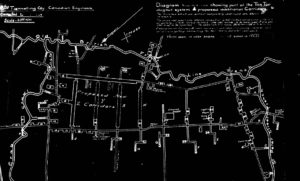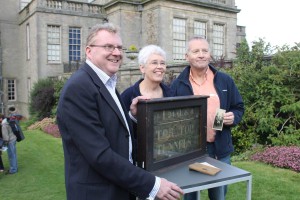
(Journal of Cultural Heritage, 2017)
Non-invasive research of tunneling heritage in the Ypres Salient (1914–1918) – research of the Tor Top tunnel system
During the First World War, the stalemate in the trenches resulted in the creation of a vast network of field defences in different theatres of war. The rediscovery of ancient siege techniques, such as military mining and the ever-increasing power of artillery fire, resulted in the creation of an underground world of tunnels and mine galleries deep below the surface. This paper explores the potential of integrating war records and non-invasive techniques (historical aerial photographs, geophysical soil-sensing techniques and airborne laser scanning) for the study of this buried war heritage in Belgium.
Reference:
Stichelbaut, B., Note, N., Saey, T., Hanssens, D., Van den Berghe, H., Bourgeois, J., Van Meirvenne, M., Van Eetvelde, V. & Gheyle, W. (2017). Non-invasive research of tunneling heritage in the Ypres Salient (1914–1918) – research of the Tor Top tunnel system, Journal of Cultural Heritage. http://dx.doi.org/10.1016/j.culher.2017.02.001
Tor Top Tunnels trench sign

On 10 September 2015, BBC’s Antiques Roadshow was filming in Lyme Park (Series 38, edition 25). One of the objects under focus was a wooden WWI trench sign with ‘TOR TOP TUNNELS’ inscription and coordinates I.24.d.8.4. It was presented by the grandson of Levy Hall, a sapper in the 83rd Field Company Royal Engineers, who served in France and in the Ypres Salient area during the war. After the armistice, the wooden trench sign was salvaged by the brigadier in command and offered to the hometown of Corporal John Cooper DCM, New Mills. He was credited with the suggestion of naming the tunnel complex and trench ‘Tor(r) Top’, referring to his own Torr Top Street in New Mills. “The Torrs” is a 300m deep gorge that cuts through the centre of the town. Torr Top was at the time of the first World War a densely populated area of terraced housing, reaching up to the cliff edge. Many men from the town joined the Sherwood Foresters in 1914-1915 and became Royal Engineers in France and Belgium, some of them also in the Hill 62 area. They gave trenches local, familiar names, like Tor Top, our Mount Sorrel, after a village near Leicester. The mentioned coordinate on the wooden sign, still splattered with mud, exactly refers to a part of Tor Top trench, just north of the dugout, and presumably was located at one of the northern entrances to the dugout. In October 2002, a plaque was inaugurated in Torr Top Street (New Mills), commemorating Tor(r) Top, Corporal Cooper and all men from New Mills and surroundings that fought there, and so the memory to the war lives on. The actual sign and related objects such as war diaries and letters of sapper Levi Hall are on exhibition in the New Mills Heritage & Information Centre.
Fragment of the show on Youtube (from 16m40s)